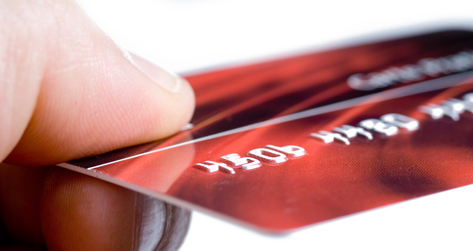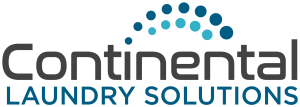In today’s highly competitive market, there is no business that can afford to lag behind in technology. With smartphones becoming the norm, and various forms of credit and debit cards dominating payment choice, consumers increasingly base their buying decisions on where they can use these technologies in their fast-paced lives. To remain a cutting edge business capable of providing exactly what your customers need and expect, you must provide an experience that is both convenient and effortless. This is where a hybrid payment system, such as SpyderWash comes into play. A hybrid system allows your customers to pay for their wash and dry with their credit or debit card but also keeps the coin in place.
Many of these hybrid systems offer much more than just credit card acceptance. They are complete laundromat management tools with full reporting, loyalty card applications and remote monitoring. In this article we will concentrate on credit cards in there many variations, as well as the reader itself, and how to decide how many units to install.
Demystifying NFC and RFID
An important part of choosing to add credit card acceptance to your laundromat is understanding credit cards themselves and where the technology is going. While we have grown up in a country that has embraced the magnetic stripe since its inception, we now lag behind most of the world in digital payment options. However, this is all about to change with Visa’s recent three-part mandate:
- First, on October 1, 2012, Visa stated that any U.S. retailer that ensures that 75 percent of its transactions occur via chip-enabled terminals will be exempt from the annual validation of its security standards.
- Second, Visa mandated that all back-office acquirer processors and sub-processor service providers in the U.S. support chip transactions by April 1, 2013.
- Lastly, there will be a shift in liability in terms of fraudulent point-of-sale transactions. Starting October 1, 2015, in instances where retailers do not have the appropriate chip technology, the financial responsibility for fraudulent transactions will be passed to the merchant, instead of being absorbed by the card issuers, as is the current policy.
With these mandates, Visa has painted the United States payment landscape to no longer be one of just magnetic stripe technology, but of EMV chip technology, encompassing contactless and mobile payments. According to ABI Research, a global technology company based in New York, an estimated 1.95 billion NFC enabled devices will ship worldwide in 2017, largely in smartphones.
In the U.S., the two prevalent emerging technologies are Near Field Communication (NFC ) and Radio Frequency Identification Device (RFID). When we started to develop the SpyderWash System, we felt that it was imperative to have both of these technologies built into our reader.
NFC uses a short range wireless link to allow “mobile wallets” to communicate with an NFC reader. Mobile wallets like Google Wallet and ISIS – which is a joint venture owned by AT&T Wireless, Verizon Wireless and T-Mobile and is rolling out its mobile wallet using NFC nationwide later this year – allow consumers to store their credit and debit cards on their smartphones. The customer is then able to just hold their phone within a couple of inches of an NFC enabled reader and charge the transaction to their credit or debit card. Even more exciting are the opportunities for marketing with NFC. When a payment is made, coupons or offers can be sent back to the phone for redemption at a future date or at another local or national business.
With RFID technology, there is a chip embedded in the card that is not visible to the eye. When the card is tapped on an RFID enabled reader, payment is made securely and quickly while a rolling algorithm ensures security. There are an estimated 80 million RFID cards currently in circulation in the U.S.
Although these new payment technologies may seem futuristic, it is important to understand that the infrastructure has been put into place for large-scale deployment. While choosing a magnetic stripe only system may take you through several years, the time will come when your customers will use these other technologies. Make sure you have a system that can handle them.
“By encouraging investment in EMV contact and contactless chip technology, we will speed up the adoption of mobile payments, as well as improve international interoperability and security,” said Jim McCarthy, global head of product at Visa. “Near Field Communication mobile payments and other chip-based emerging technologies are poised to take off in the coming years, so we are taking steps today to create a commercial framework that will support growth opportunities and create value for all participants in the payment chain.”
For more information on this new technology, visit gemalto.com/emv/.
Choosing a Card Reader
Credit card readers are made out of either metal or plastic. Both materials are exceptionally durable and will withstand the test of time. Metal readers will need to be made out of either stainless steel or have a high quality painted surface to ensure longevity of the finish. However, what is more important is the separation between the magnetic head and the electronic components in the reader. An unsealed reader will be susceptible to moisture, dirt and corrosion. All internal components should be conformal coated (protection for printed circuit boards), whether the reader is fully sealed or not. In addition to internal reader protection, it is recommended to have a gasket between the reader and the surface that the reader is attached to. This gasket helps in keeping soap and bleach out from the two meeting surfaces, and moisture from seeping in behind the reader.
There is also the option of either an insertion type reader or swipe style. In the laundry industry, the insertion readers are very susceptible to quarters being jammed into them and most manufacturers have opted for a swipe style reader.
Regardless of the system you choose, maintaining the magnetic head of the reader should be done periodically with a magnetic head cleaning card. This will improve the reading of Magnetic Stripe Cards. There is no maintenance for RFID or NFC because it is a contactless transaction.
Sizing Your System
No matter what sales pitch you’ve heard, it will be the end user who decides if you have installed enough credit card readers on your washers and dryers to meet their needs. In their eyes, a machine without a credit card reader (if that is their payment method of choice) is like a machine with an out-of-order sign on it. While a partial installation (with a minimum recommendation of 50 percent of your machines) may be a great start for many operators, it should be accompanied by a plan for completion. The most successful stores are the ones with 100 percent of their machines converted, and this should be your end goal.
While your perspective as a business owner may be financially driven, the consumer is primarily motivated by the convenience that you have provided for them. When a customer comes to your store on a busy day with the expectation of using their credit card (and possibly brought no cash) and there is not a card enabled machine available, then what should have been a positive experience has now become your wasted advertising dollars. Similarly, if a customer is able to use their credit card to start one machine but can’t finish the process for the rest of their laundry, the next time they need to do laundry they may opt to just use coins or return to the store they previously frequented.
If you must install a partial system, it should be carefully planned out while keeping some of the following guidelines in mind:
- Never install units on just “a couple of machines.”
- Try to install readers on at least 50 percent of your machines, the more the better. Any manufacturer or distributor should give you that same advice.
- Make sure you choose some of each machine type, not just the big machines.
- Install readers on the least-used machines so that washers and dryers are more likely to be available during your busy times and not being utilized by your cash customers.
- Have a well-defined plan to continue to add readers until the store has been completed.
At Setomatic Systems, manufacturer of the SpyderWash Payment System, we have a 20-unit minimum recommended order. These guidelines have been set to ensure that, as an operator, you install enough readers for the system to be a success at your location. While 20 units still might not be enough for your location, our two decades of manufacturing experience in washer and dryer credit card payment systems has taught us that owners who install units on only a couple of machines will seldom buy any more because they deem the system a failure. Not only are these operators unsuccessful with their systems, the consumer has seen no net benefit.
All in all, each manufacturer of hybrid payment systems will have their own unique features that they will be promoting – they may be strong in one area and weak in another. Examine each feature carefully and decide what best suits your operation. If your questions are not satisfactorily answered, or if your distributor does not carry the system that you are interested in, call the manufacturer directly. It is our job to help you in sizing a system that will meet your specific locations needs. We can also help you find a distributor in your area.
As manufacturers, we are driven by your success and know that this is a considerable investment that needs to work for both you and your 21st century customers. Do your research and ask many questions – it will pay off in the end.
#BusinessManagement #Equipment #FeaturedArticle #Article #CustomerService #PlanetLaundry #Laundry101 #StoreOperations #Public












